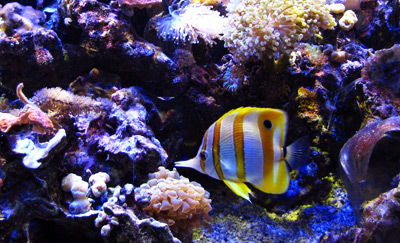
When it comes to standing the test of time, few aquariums have more history than Paul Baldassano’s 100-gallon glass box. Ask any aquarist who has spent time on internet forums, and they’ve likely encountered Paul (more commonly known as Paul B) and his tank. While Paul’s “old school” approach might seem odd to some folks, his success speaks for itself. Any system that’s been up and running successfully for 40+ years must have a great aquarist, creative ideas, and good ol’ elbow grease behind it.
The Aquarist
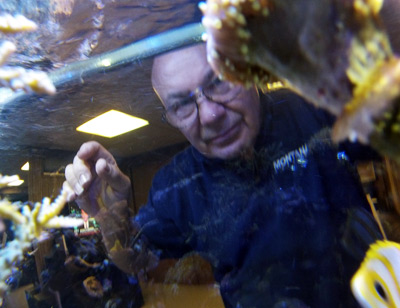
Paul resides in Long Island, New York and has kept aquariums since the 1950s. Like many saltwater aquarists, he started his tenure on the freshwater side of the hobby. In 1971, after serving in the Army in Vietnam, Paul returned home and started what was to become the “40-year-old tank.”
His impact on the hobby goes further than his own aquarium, as well. He invented the Majano Wand and holds two aquarium-related patents. In addition to his regular contributions here at Saltwater Smarts, you may have seen Paul’s humorous musings about the hobby (and life in general) across various saltwater forums.
Aquarium Overview
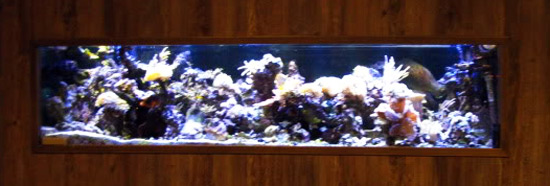
This 6-foot, 100-gallon aquarium recently turned 43 years old. Yes you read that right, 4-3 years old. It was born in the “dark ages” of saltwater aquariums, when little was known about husbandry and techniques had yet to be developed. When he first set up this aquarium, Paul utilized dead coral skeletons for aquascaping, driveway gravel for substrate, and an undergravel filter. It’s all that was known at the time!
Over the years, the tank was updated and Paul put more personal touches on it. The undergravel filter was converted to a reverse undergravel system and topped with dolomite, both of which are still used in the tank to this day. Coral skeletons were replaced with live rock collected in the Caribbean during scuba-diving adventures, which has now given way to a lot of DIY rock. One of the unique things you’ll notice is the presence of quite a few artificially aged bottles scattered throughout the aquascape (see video at end of article).
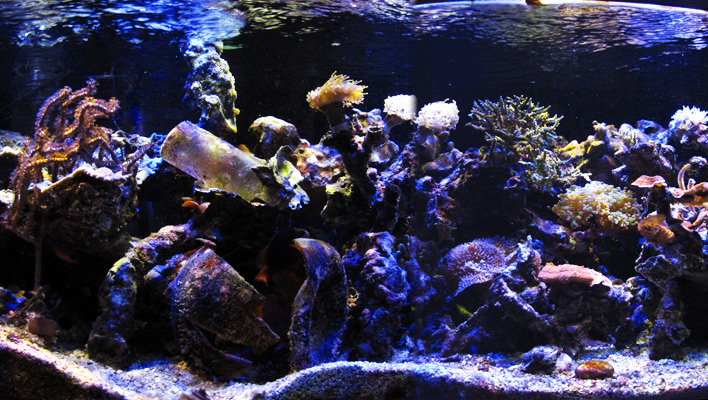
While many folks still consider his tank “old school,” its current form is much more advanced than the first rendition. It’s currently home to a variety of SPS, LPS, and soft corals, as well as around 20 fish (many of which are spawning).
Equipment & Maintenance
You’ll see a common theme across Paul’s system: He’s a big fan of DIY projects and they’re truly the backbone of his aquarium. The equipment breaks down as follows:
- Reverse undergravel filter (converted from standard UG filter)
- DIY 5-foot-tall venturi skimmer (with ozone injection)
- DIY algae trough/scrubber
- 2x Koralia powerhead
- 2x heater
- DIY auto top-off & RO/DI system
- DIY LED fixture (36x 3 watt LEDs with custom counterweight system)
Paul spends very little time on maintenance for this aquarium, and he prefers to keep it as natural as possible. Here’s what his maintenance routine looks like:
- Once or twice weekly: clean glass, dose calcium (driveway ice melter) and alk (baking soda)
- 5x a year: 20% water change (some of which is NSW he collects)
- 5x a year: add mud collected from local bay for bacterial benefits (removed a few days later)
- 2x a year: add locally collected amphipods
- Yearly: clean reverse UG filter, stir substrate
Inhabitants
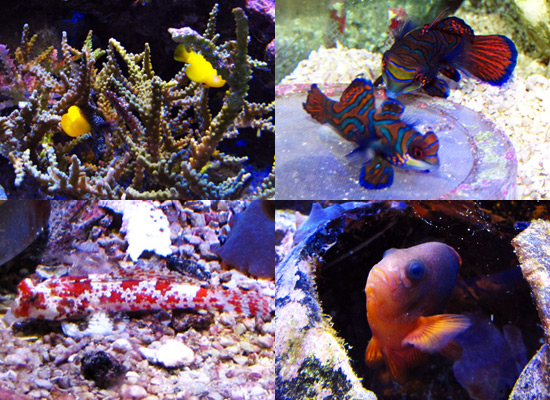
Corals
Montipora, Acropora, Leathers, Mushrooms, Hammer, Frogspawn, Xenia, Gorgonians
Fish
- Copperband butterflyfish (Chelmon rostratus)
- Possum wrasse (Wetmorella sp.)
- 7x assorted cardinalfish—4 of them spawning
- 2x Green mandarinfish (Synchiropus splendidus)—spawning
- 2x Fire clownfish (Amphiprion ephippium)—20 years old and still spawning
- 2x Watchman goby—spawning
- Red scooter dragonet (Synchiropus stellatus)
- Scissortail dartfish (Ptereleotris evides)
- 2x Clown gobies (Gobiodon sp.)—spawning
- 3x small unknown goby
Other Inverts
- Longspine urchin (Diadema sp.)
- 2x Pistol shrimp—possibly spawning
- Hermit crabs
- Mud snails (collected locally in New York)
Food
Paul will tell you that one of the biggest reasons for the success of his aquarium (and its inhabitants) is live food. He regularly feeds live California blackworms, clams, and newborn baby brine shrimp. He created a DIY hatchery and shell separator that provides a constant supply of BBS for use in his DIY target feeder. The target feeder works well to keep slower, but frequent, eaters (such as mandarins, pipefish, etc.) well-fed and happy in his aquarium.
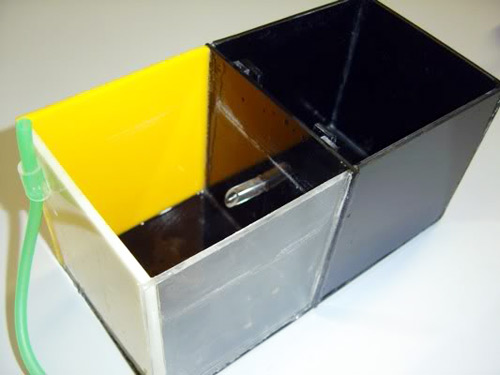
Occasionally on the menu for the inhabitants are live whiteworms and locally collected amphipods. He also targets his nocturnal feeders with an automatic feeder that dispenses fish-oil-soaked sinking pellets.
Final Notes
As Paul previously discussed, fishkeeping success is pretty easy to identify—the fish in your care either survive and thrive or they don’t. Understanding that fish are different by design and what’s needed to keep them in spawning condition (what he strives for with all his inhabitants) is paramount to the long-lasting success he has seen in this hobby. It’s nowhere more evident than in this beautifully aged aquarium!
Photo and video credit: Paul Baldassano



